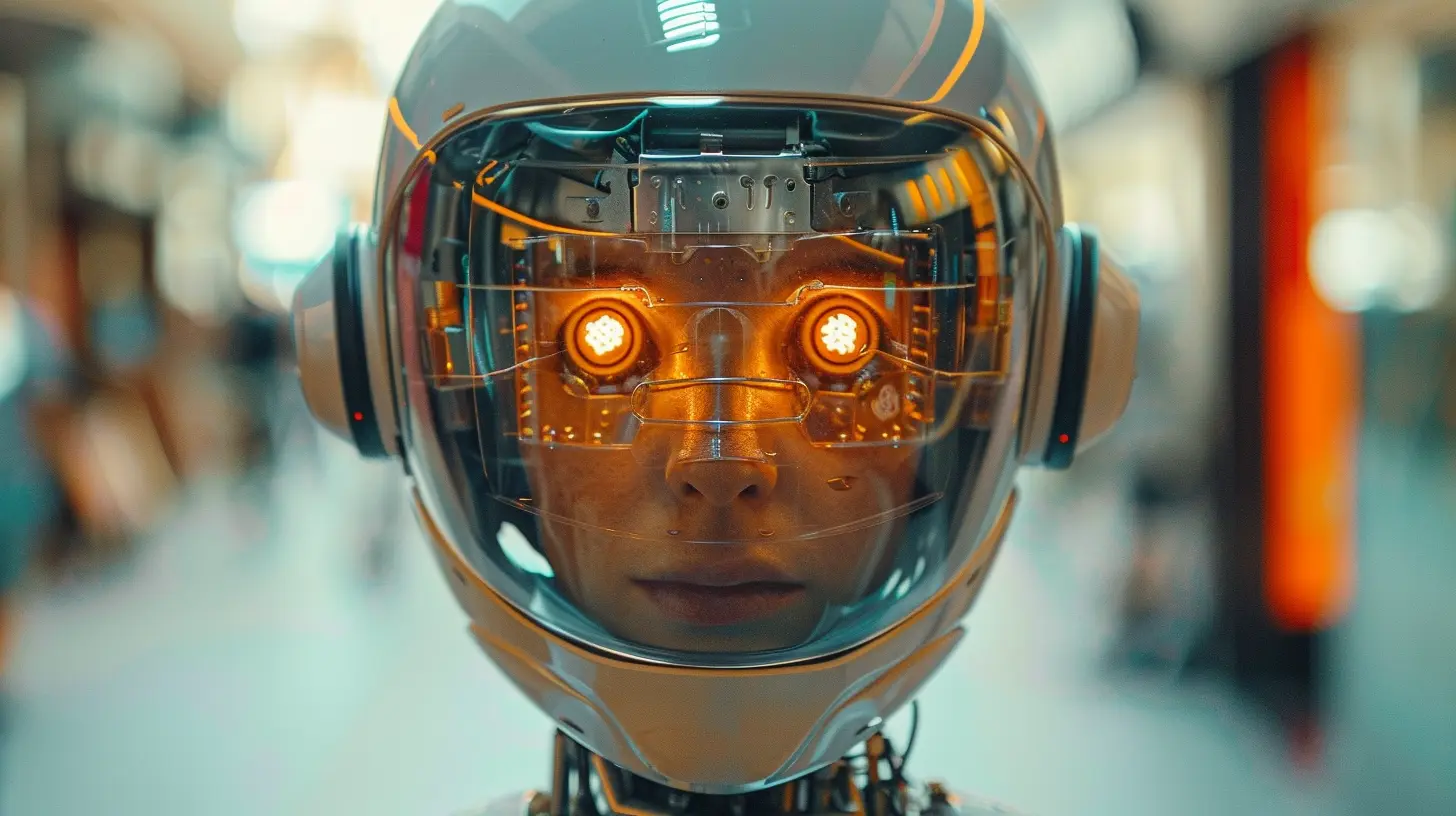Machine Learning's Impact on Customer Experience in the Digital Era
8 July 2025
Let’s face it — we live in a digital jungle where customers expect everything at lightning speed, with a side of personalization. Gone are the days of generic “Dear Customer” emails and cookie-cutter experiences. Today, people want to feel like your brand not only knows them but gets them. And guess what’s making that possible? Yep, you nailed it — Machine Learning (ML).
Machine Learning is no longer just a buzzword for data scientists locked away in some secret lab. It’s now the muscle behind some of the most sophisticated and mind-blowing customer experiences you’ve ever seen. Whether you're shopping on Amazon, chatting with a bot on your bank app, or binge-watching Netflix, ML is working behind the curtain, making sure your experience feels tailor-made.
So, what’s all the fuss about? How exactly is Machine Learning reimagining the customer experience? Buckle up — this is going to be a ride.
What Is Machine Learning, Really?
Before we dive in, let’s strip away the tech jargon and break it down. Machine Learning is like giving computers a brain — sort of. It’s when machines learn patterns from data without being explicitly programmed.Imagine teaching your dog to fetch a ball. At first, you guide him. After a few rounds, he gets it on his own. Machine Learning is kind of like that, but instead of dogs and balls, we’ve got algorithms and data.
These smart systems analyze tons of info, notice trends, make predictions, and even change their behavior based on new data — all without you lifting a finger.
Why Customer Experience Is the New Battleground
In today’s hyper-competitive digital world, products alone won’t cut it. You could have the fanciest gadget or the hottest app, but if your customer experience sucks, you’re toast.Think about it — how many times have you closed a website because it was slow or clunky? Or got frustrated with a chatbot that just didn’t get what you were saying?
Customers don't just want speed; they want smart speed. They crave relevance, convenience, and a touch of magic. And that’s where Machine Learning really starts flexing its muscles.
Hyper-Personalization: Not Just a Buzzword
You know when Spotify drops a weekly playlist that somehow knows your mood better than you do? Or when Netflix recommends a show that's weirdly spot on? That’s ML-powered personalization in action.How It Works:
Machine Learning taps into user data — from clicks, browsing behavior, purchase history, and even how long you watched a video. Then, it builds a profile so accurate it’s a little creepy (in a cool way).It helps brands show the right content to the right person at the right time. We're not talking about “People also bought…” anymore. We're talking about full-on crystal-ball predictions of what you’ll love next.
Takeaway: Hyper-personalization isn’t just about selling more stuff. It's about making users feel understood — and that’s priceless.
Chatbots That Don’t Suck
Let’s be honest — chatbots used to be terrible. They’d give canned responses, misunderstand you, and leave you screaming “AGENT!!” into your screen. But thanks to ML, chatbots grew up.The New Breed:
Modern AI-powered bots understand natural language. They learn from each interaction, get smarter over time, and can even detect tone (yes, tone!). That means more meaningful conversations, faster resolutions, and a whole lot less irritation.And no – they don’t need coffee breaks.
These bots are available 24/7, making them perfect frontline warriors for customer support, sales, and everything in between.
Predictive Analytics: Your Brand’s Crystal Ball
Imagine if you knew what your customers needed before they even did. That’s not sci-fi. That’s predictive analytics powered by ML.Let’s say someone browses a skincare site. Instead of waiting for them to buy, the system predicts what they’re most likely to want next and sends them a timely offer. Boom — conversion!
Or maybe a telecom company predicts a customer’s about to churn. They can swoop in with a personalized retention offer before the customer decides to leave.
Bottom Line:
Machine Learning helps businesses move from reactive to proactive. We're not just talking about responding faster — we’re talking about anticipating customer needs like a mind reader.Real-Time Recommendations: The Netflix Effect
We’ve all spent way too long scrolling Netflix. But ever noticed how it serves up new content just as you're about to get bored?That’s not luck.
ML models analyze what you’ve watched, when, how often, and then recommend content with pin-point precision. This keeps you engaged, watching more, and ultimately sticking around longer.
E-commerce, news apps, even dating platforms use this same tech. Why? Because relevance = retention.
It’s not about throwing stuff at you. It’s about giving you what you didn’t even know you wanted.
Voice Assistants: The New Customer Service Reps
“Hey Siri, what’s the weather like?”Voice assistants like Siri, Alexa, and Google Assistant are Machine Learning in audio form. They understand voice commands, learn your preferences, and adapt over time.
But we’re not just talking about turning on your smart lights.
Brands are now integrating voice AI into customer service platforms. Instead of typing out a query, you just ask — like you would with a human rep. And the responses? Fast, accurate, and aligned with your past behavior.
That’s peak convenience.
Sentiment Analysis: Reading Between the Lines
Wouldn’t it be awesome if your company could sense when a customer is annoyed — before they even say it outright?Machine Learning's got that covered.
Sentiment analysis tools scan reviews, social media posts, emails, and support tickets to detect emotions. Are customers happy? Confused? Angry?
With that knowledge, companies can:
- Flag bad experiences in real-time
- Alert support teams
- Automatically adjust messaging
It’s like emotional intelligence for machines. And it’s changing how businesses handle feedback — from reactive damage control to proactive service.
Smarter Search Is a Game-Changer
Ever typed something into a website's search bar and got total garbage in return? You're not alone.Thanks to ML, search bars are finally getting smarter. These AI-powered search tools understand natural language, typo errors, synonyms, and even context.
So when you type “cheap wireless headphones” instead of “Bluetooth earbuds under $50,” the results are still spot-on.
That means less friction. Less frustration. More conversions.
Fraud Detection That Actually Detects Fraud
Customer experience isn’t just about pretty interfaces and fast support. It’s also about trust.Machine Learning plays a massive role in detecting and preventing fraud in real time.
From suspicious login attempts to irregular purchase patterns, ML can flag anomalies faster than any human ever could.
The result? Safer transactions and peace of mind — which, let’s be honest, is the ultimate customer comfort.
A/B Testing on Steroids
In the old days, A/B testing was tedious. Set up two versions of a webpage. Wait. Gather data. Measure. Repeat.Now, Machine Learning turns testing into a living, breathing, real-time experiment.
It continuously monitors performance, auto-adjusts variables, and delivers personalized experiences based on what’s working best for each user. That’s not split testing — that's optimization on autopilot.
The Flip Side: Challenges and Cautions
Alright, let’s not get carried away. ML isn't magic. There are challenges:- Bias in data can lead to unfair outcomes.
- Privacy concerns are very real.
- Over-automation can make things feel robotic.
The key? Balance.
Yes, use Machine Learning to enhance the customer experience. But never lose the human touch. Technology should elevate relationships — not replace them.
The Future Is Here — And It's Personal
Machine Learning isn’t just coming for customer experience — it’s already here, quietly shaping every click, swipe, and scroll.It’s the invisible genie behind the screen, making sure that your digital experience feels less like a transaction and more like a conversation.
And in a world where attention is currency, delivering intuitive, personalized, seamless experiences isn’t optional — it’s survival.
Here’s the real kicker: The brands that leverage Machine Learning effectively? They won’t just meet customer expectations — they’ll blow them out of the water.
So whether you're a business owner, marketer, or tech geek — it's time to lean in. Because the ML-powered future of customer experience is here, and it's changing the game for good.
all images in this post were generated using AI tools
Category:
Digital TransformationAuthor:

Reese McQuillan
Discussion
rate this article
2 comments
Echo Wheeler
Exciting possibilities for personalized experiences ahead!
November 10, 2025 at 3:46 AM

Reese McQuillan
Thank you! We're thrilled about the potential of machine learning to enhance personalization in customer interactions.
Paige Adkins
Great insights! Machine learning is like the secret sauce for elevating customer experiences in our digital world. It’s exciting to see how personalized recommendations and smart chatbots are transforming interactions. Here’s to a future of seamless, delightful experiences for all! Keep up the great work!
July 17, 2025 at 2:52 AM

Reese McQuillan
Thank you for your kind words! I’m glad you found the insights valuable. Exciting times ahead as we continue to enhance customer experiences through machine learning!


